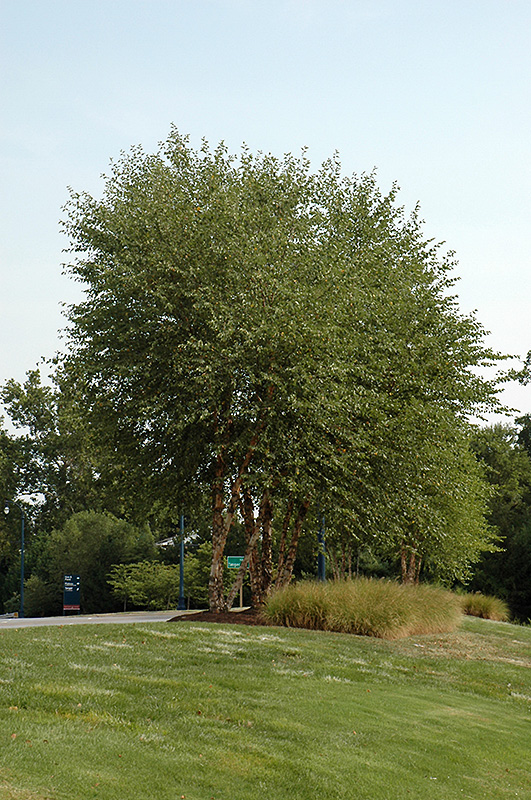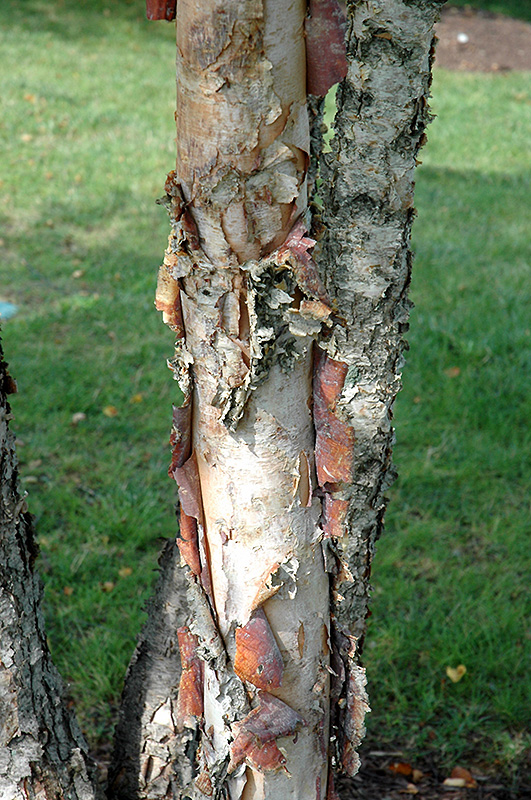Digging deeperPlant Library
Heritage River Birch (clump)
Betula nigra 'Heritage (clump)'
Height: 35 feet
Spread: 35 feet
Sunlight:
![]()
![]()
Hardiness Zone: 3
Other Names: Red Birch
Description:
A multi-trunked form of the native river birch selected for its amazing peeling bark in colors of white, brown and tan, more creamy white than the species, also has reliable fall color; needs acidic soil, susceptible to chlorosis in alkaline soils
Ornamental Features
Heritage River Birch (clump) features subtle chartreuse catkins in early spring. It has dark green deciduous foliage. The pointy leaves turn an outstanding yellow in the fall. The peeling creamy white bark is extremely showy and adds significant winter interest.
Landscape Attributes
Heritage River Birch (clump) is a multi-stemmed deciduous tree with a more or less rounded form. Its relatively fine texture sets it apart from other landscape plants with less refined foliage.
This is a relatively low maintenance tree, and is best pruned in late winter once the threat of extreme cold has passed. It is a good choice for attracting birds to your yard. It has no significant negative characteristics.
Heritage River Birch (clump) is recommended for the following landscape applications;
- Accent
- Shade
Planting & Growing
Heritage River Birch (clump) will grow to be about 35 feet tall at maturity, with a spread of 35 feet. It has a low canopy with a typical clearance of 3 feet from the ground, and should not be planted underneath power lines. It grows at a fast rate, and under ideal conditions can be expected to live for 40 years or more.
This tree does best in full sun to partial shade. It is quite adaptable, prefering to grow in average to wet conditions, and will even tolerate some standing water. It is not particular as to soil type, but has a definite preference for acidic soils, and is subject to chlorosis (yellowing) of the foliage in alkaline soils. It is highly tolerant of urban pollution and will even thrive in inner city environments. Consider applying a thick mulch around the root zone in winter to protect it in exposed locations or colder microclimates. This is a selection of a native North American species.
A NetPS Plant Finder tool
This Plant Library is for informational purposes only. We may or may not carry the items listed. During many times of the year, we may carry many more plants in our store than are listed in the Plant Library. Please contact us directly at 303-690-4722 or visit our store for current availability and for assistance.

